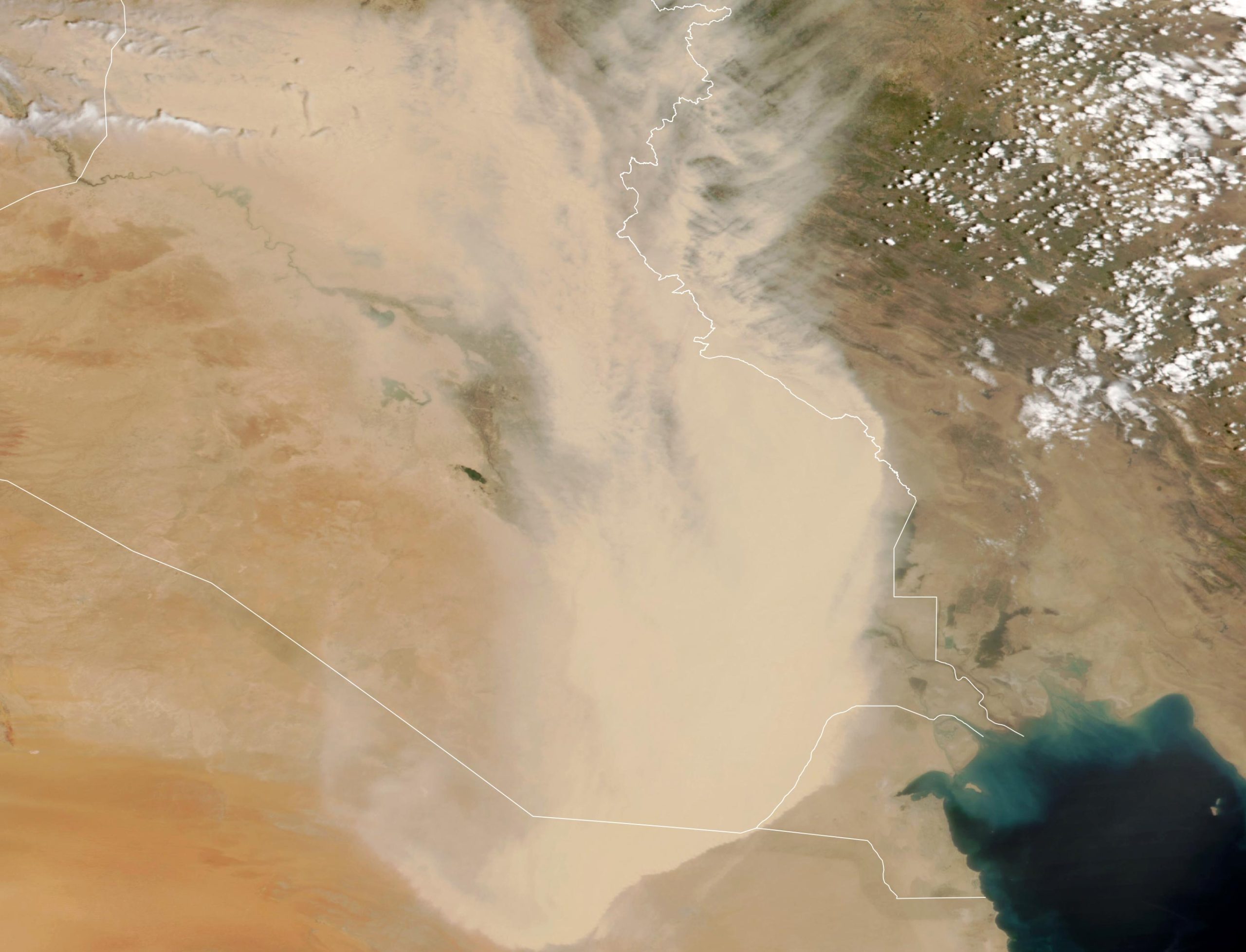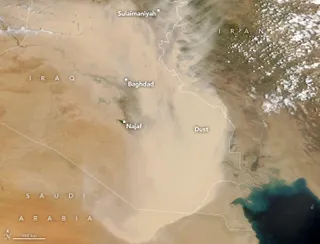

May 16, 2022
At least eight major events in Iraq have darkened skies and sickened people in the past six weeks.
Iraq and other countries of the Middle East have been battered by a series of severe dust storms since the beginning of April 2022. Thousands of people have been hospitalized as a result of two severe storms in the last two weeks, since poor air quality from airborne dust may worsen asthma and other respiratory disorders.
As visibility decreased to a few hundred meters, the skies over Baghdad, Najaf, Sulaimaniyah, and other Iraqi cities became orange. Several airports were closed during the major dust events, and schools were closed across the country. Government offices in seven of Iraq’s 18 provinces were shuttered, and several governors declared states of emergency.
The natural-color images in this article were acquired with the Moderate Resolution Imaging Spectroradiometer (MODIS) instruments on NASA’s Terra and Aqua satellites. The image at the top was captured by Aqua MODIS on May 16, 2022, while the image below comes from Terra MODIS on May 5.

May 5, 2022
Dust storms in Iraq are most common in late spring and summer, provoked by seasonal winds such as the “shamal” that blows in from the northwest. Researchers suggested in a 2016 paper that La Niña conditions in the equatorial Pacific can lead to an earlier onset of shamal winds. Recent observations suggest that La Niña may be persisting into a third consecutive year.
Those strong seasonal winds blow across abundant sources of dust. According to The World Bank, northern Iraq—between the Tigris and Euphrates rivers—has the highest density of dust sources in the Middle East.
News media reported that Iraq has been hit by at least eight dust storms in the past six weeks. Researchers have found that dust events have become more frequent in Iraq. The country has been facing drought conditions in recent years, as well as land-use changes and overuse that mean there is more loose soil available to be lofted into the atmosphere. The World Bank cited Iraq as one of the countries most vulnerable to desertification and climate change.
NASA Earth Observatory images by Lauren Dauphin, using MODIS data from NASA EOSDIS LANCE and GIBS/Worldview.

